JHZR2
Staff member
My 81 MB 240D has Dunlop Sport A2+ tires that were made week 18 of 2005. They might have 10k miles on them if that, and the car is always garaged. Tons of tread.
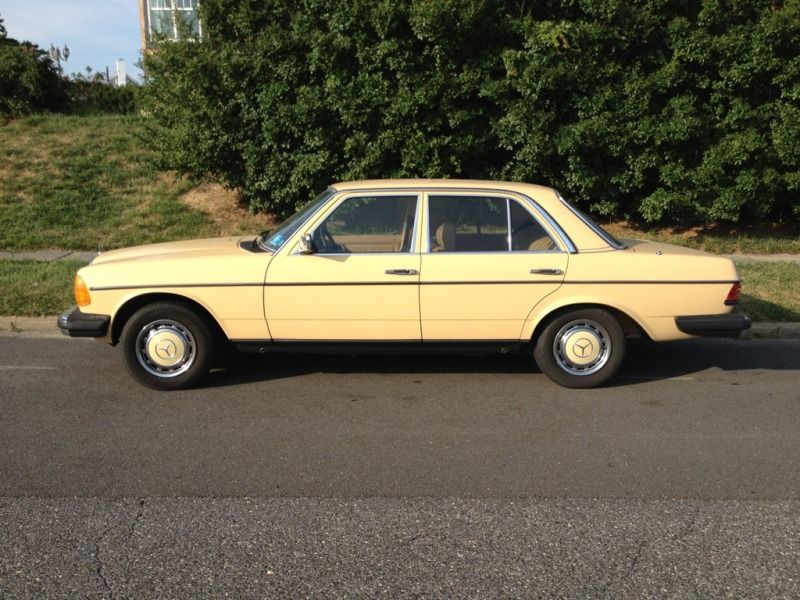
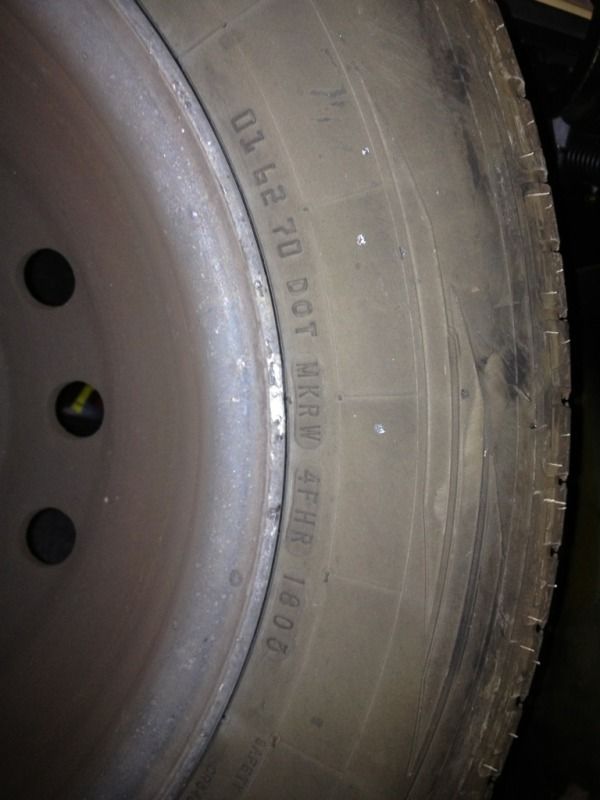
Today we were driving in the car and unlike normal, they made a very faint but noticeable wopwopwopwopwop type noise (not like a flat tire sound, more like the sound that my BFG A/T Radials make cruising down the road). Ive put 1300 or so miles on the car since January of 2010, we use it as a weekend drive and go to the beach car. It is practically like new, a time capsule of the w123 diesel cars I love, so I dont use it too much.
I figured maybe the tires had flatspotted, causing the noise, though I do keep them at the upper pressure specification that MB recommends. We were driving and all of a sudden, I noticed more vibration in the car, and then heard a metallic bang. It turns out we picked this up:
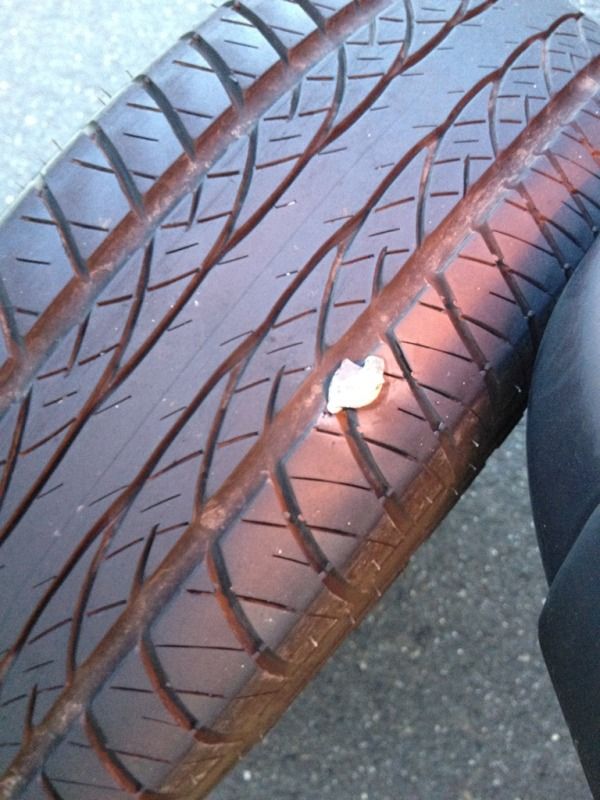
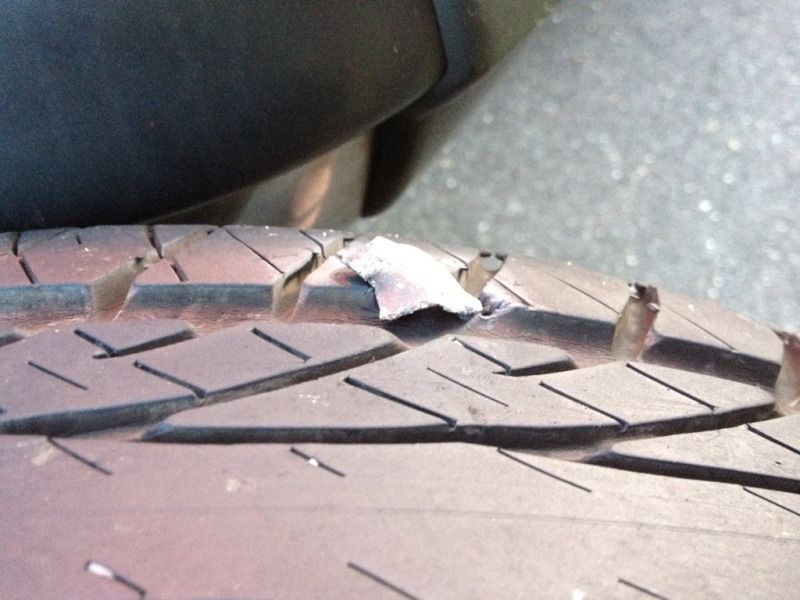
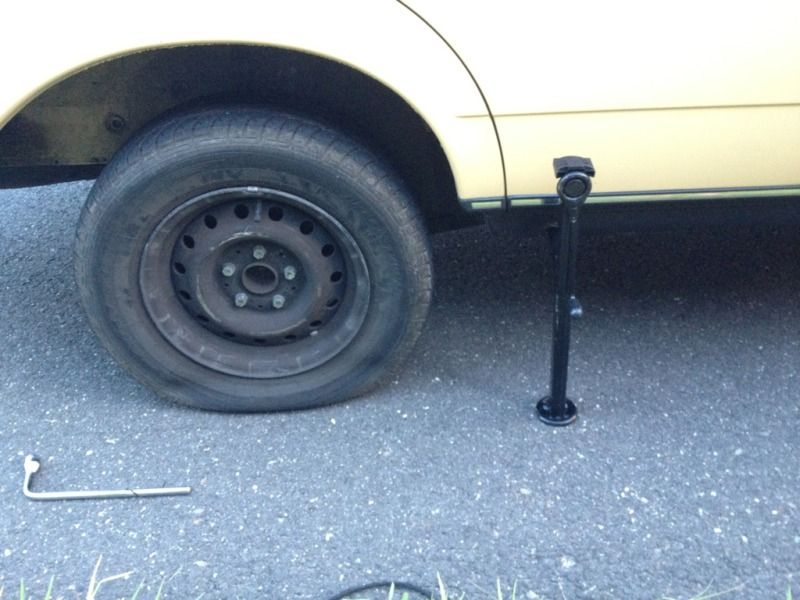
The tire was still hissing air, but was real flat. Of course the tire was really hot on the tread.
Honestly the car was super stable, there wasnt a ton more noise than I had before we caught this metal piece. I was driving 65 MPH and if I wasnt paying attention, probably could have just continued doing so hapily for many more miles. I did have a blowout once in a w123, and it too was really stable and just continued on like nothing happened... A testament to the nature of the design of these cars.
Anyway, the spare was a bit low to me, so we drove to a nearby gas station (a few miles) to air up. What I noticed was surprising... The spare tire was pretty warm (which I would expect as it was in the low 20 psi range). But the opposite side tire was equally hot, and had 38 psi, which is above the standard mfr pressure of 32. It was substantially hotter than either front tire... not expected.
So, where am I going with all this? Not just a story of this evening's events... Instead that Im hearing more noise AND seeing more heat on tires that are kept indoors, out of light, well-inflated, etc. Heat on the good tire felt almost as warm as was felt on the punctured tire after driving and coasting down from 65+ MPH.
Ive seen 6 years and 10 years as the replacement range. Obviously I am between these guidelines. Is it plausible that tires might rapidly degrade past a certain point and rapidly generate heat, soften up, get noisier, etc?
The puncture and the noting of tire heat, which is different between tires (and is lower on the front, lower pressure tires) are really two unrelated things, but I might not have noticed the one without the other occurring. So, does heating and degradation tend to occur rapidly after a point?


Today we were driving in the car and unlike normal, they made a very faint but noticeable wopwopwopwopwop type noise (not like a flat tire sound, more like the sound that my BFG A/T Radials make cruising down the road). Ive put 1300 or so miles on the car since January of 2010, we use it as a weekend drive and go to the beach car. It is practically like new, a time capsule of the w123 diesel cars I love, so I dont use it too much.
I figured maybe the tires had flatspotted, causing the noise, though I do keep them at the upper pressure specification that MB recommends. We were driving and all of a sudden, I noticed more vibration in the car, and then heard a metallic bang. It turns out we picked this up:



The tire was still hissing air, but was real flat. Of course the tire was really hot on the tread.
Honestly the car was super stable, there wasnt a ton more noise than I had before we caught this metal piece. I was driving 65 MPH and if I wasnt paying attention, probably could have just continued doing so hapily for many more miles. I did have a blowout once in a w123, and it too was really stable and just continued on like nothing happened... A testament to the nature of the design of these cars.
Anyway, the spare was a bit low to me, so we drove to a nearby gas station (a few miles) to air up. What I noticed was surprising... The spare tire was pretty warm (which I would expect as it was in the low 20 psi range). But the opposite side tire was equally hot, and had 38 psi, which is above the standard mfr pressure of 32. It was substantially hotter than either front tire... not expected.
So, where am I going with all this? Not just a story of this evening's events... Instead that Im hearing more noise AND seeing more heat on tires that are kept indoors, out of light, well-inflated, etc. Heat on the good tire felt almost as warm as was felt on the punctured tire after driving and coasting down from 65+ MPH.
Ive seen 6 years and 10 years as the replacement range. Obviously I am between these guidelines. Is it plausible that tires might rapidly degrade past a certain point and rapidly generate heat, soften up, get noisier, etc?
The puncture and the noting of tire heat, which is different between tires (and is lower on the front, lower pressure tires) are really two unrelated things, but I might not have noticed the one without the other occurring. So, does heating and degradation tend to occur rapidly after a point?

